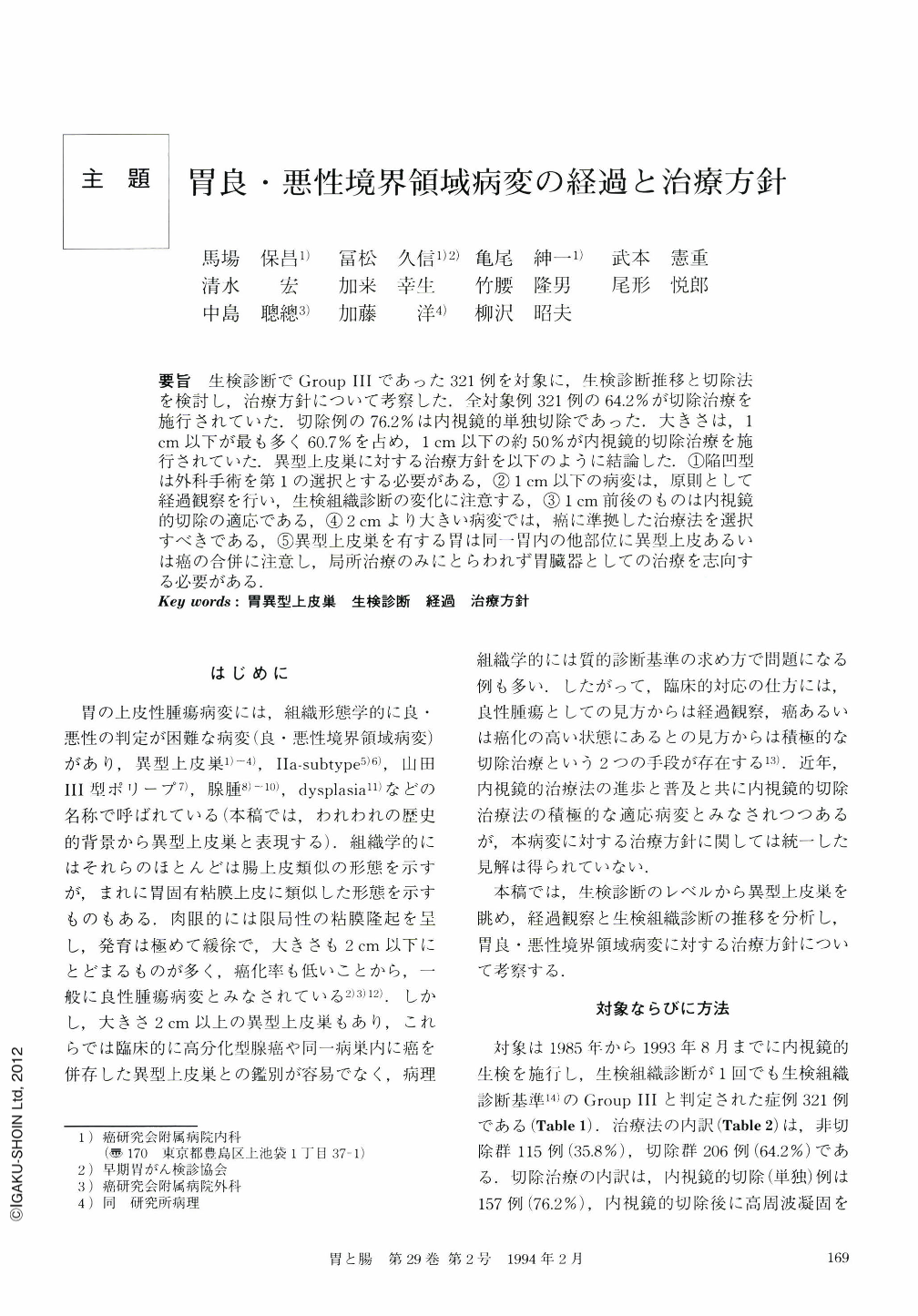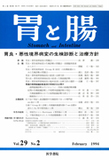Japanese
English
- 有料閲覧
- Abstract 文献概要
- 1ページ目 Look Inside
要旨 生検診断でGroupⅢであった321例を対象に,生検診断推移と切除法を検討し,治療方針について考察した.全対象例321例の64.2%が切除治療を施行されていた.切除例の76.2%は内視鏡的単独切除であった.大きさは,1cm以下が最も多く60.7%を占め,1cm以下の約50%が内視鏡的切除治療を施行されていた.異型上皮巣に対する治療方針を以下のように結論した.①陥凹型は外科手術を第1の選択とする必要がある,②1cm以下の病変は,原則として経過観察を行い,生検組織診断の変化に注意する,③1cm前後のものは内視鏡的切除の適応である,④2cmより大きい病変では,癌に準拠した治療法を選択すべきである,⑤異型上皮巣を有する胃は同一胃内の他部位に異型上皮あるいは癌の合併に注意し,局所治療のみにとらわれず胃臓器としての治療を志向する必要がある.
We analyzed 321 patients of Group Ⅲ lesion diagnosed by biopsy, for the purpose of evaluating changes in biopsy diagnosis during the follow-up period and removal methods, as well as considering the practical guidelines to manage Group Ⅲ lesions. Two hundred six out of 321 patients (64.2%) were treated by resection. One hundred seven patients (76.2% of all resected cases) were simply treated by endoscopic resection. Most of the lesions (195 patients, 60.7%) were less than 1 cm in size and about 50% of them were treated surgically or endoscopically. Macroscopically, 81.6% (262 patients) was the elevated type and 7.5% (24 patients) was the depressed type. Eighty percent of the depressed type was cancer and/or cancer associated conditions. Four cases (1.2%) were apparently enlarged in the follow-up period. The diagnostic correspondence rate between biopsy and resected specimens was high; it was over 90% in the cases with multiple biopsy examinations over the one year period, and the biopsy diagnosis was reflected by the resected specimen diagnosis. In the resected cases, 17.7% of the lesions smaller than 1 cm had cancerous lesions, however, 44.6% of the lesions larger than 1 cm accompanied malignant lesions. Malignant transformation rate of the atypical epithelium being calculated by the method of Kato was 8.1%. Thirty eight patients (18.4% of the resected cases) had multifocal atypical epithelial lesions and 13.6% (28 patients) accompanied early gastric cancers in the different areas.In conclusion, the practical therapeutic guidelines would be as follows: 1) The first choice of treatment for the depressed type should be surgical resection, 2) A lesion less than 1 cm in size needs to be followed regularly and we should be careful with any change in the biopsy examination, 3) A lesion about 1 cm in size may be indicated for the endoscopic resection, 4) A lesion more than 2 cm in size should be treated as a cancer, 5) A case with gastric atypical epithelium may be accompanied by the other lesions such as atypical epithelium and/or cancer in the stomach, so that we should deal with not only the atypical epithelial lesion but the whole stomach.

Copyright © 1994, Igaku-Shoin Ltd. All rights reserved.


